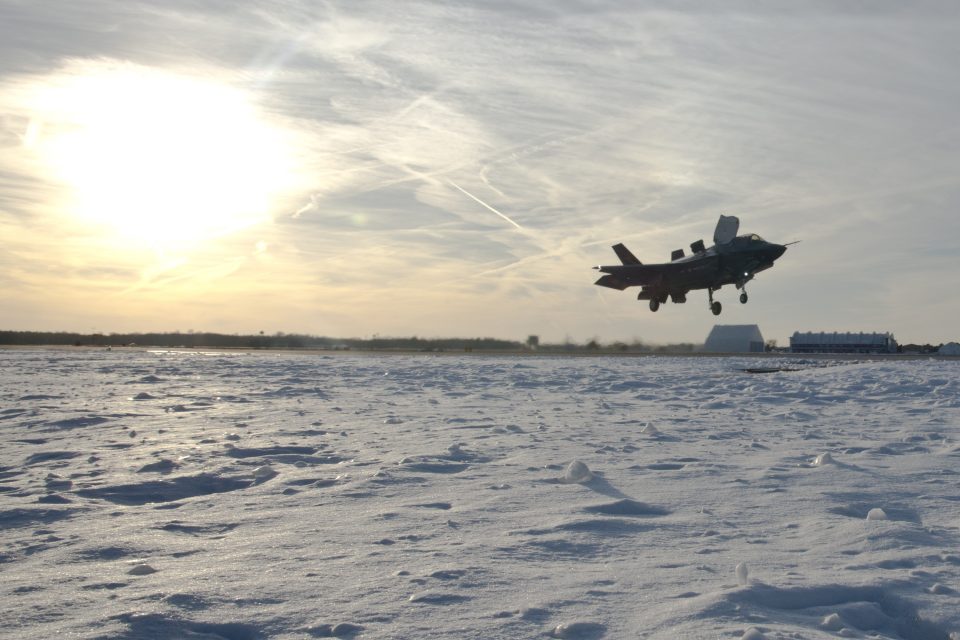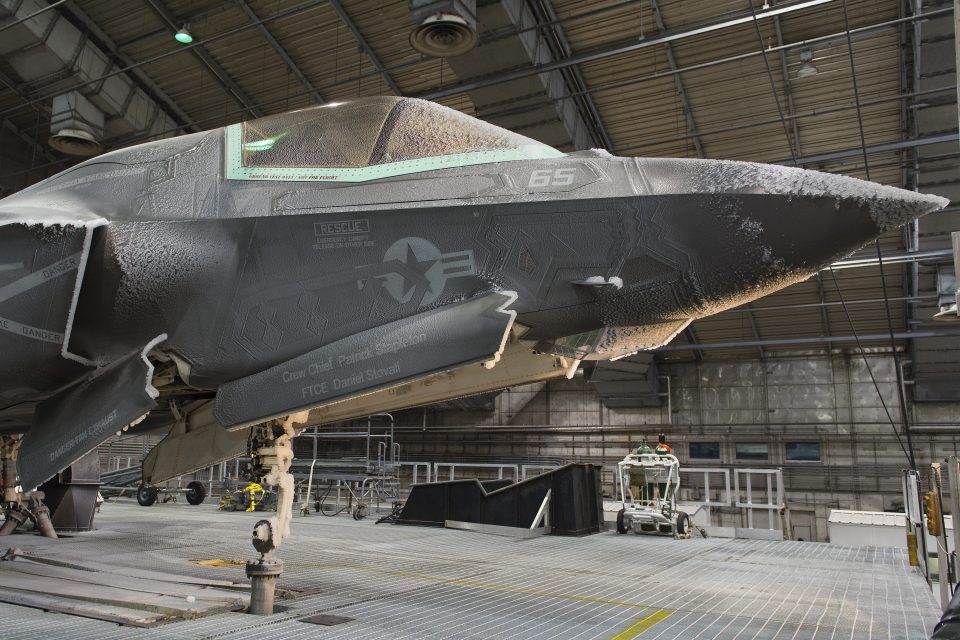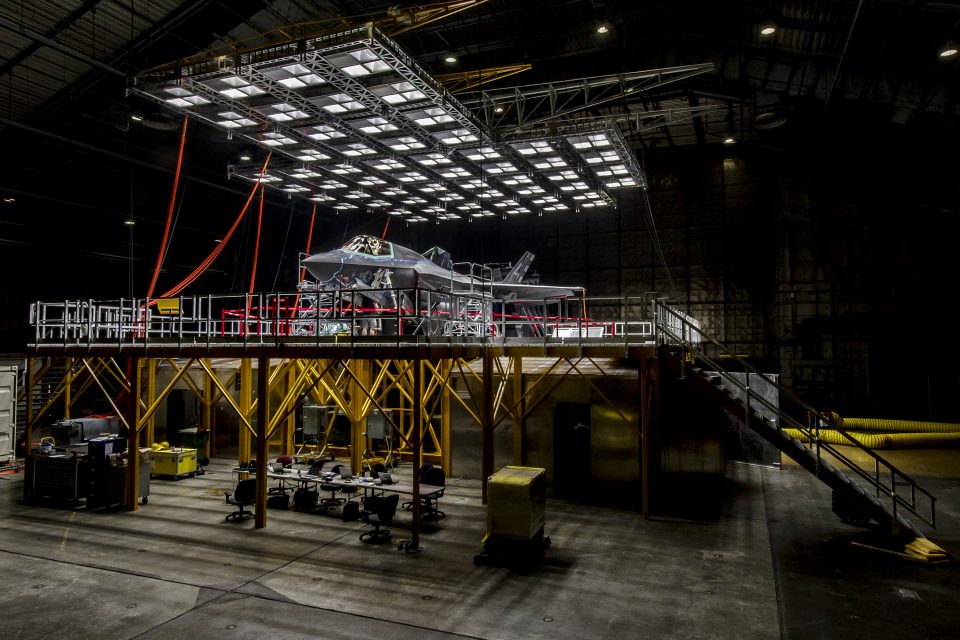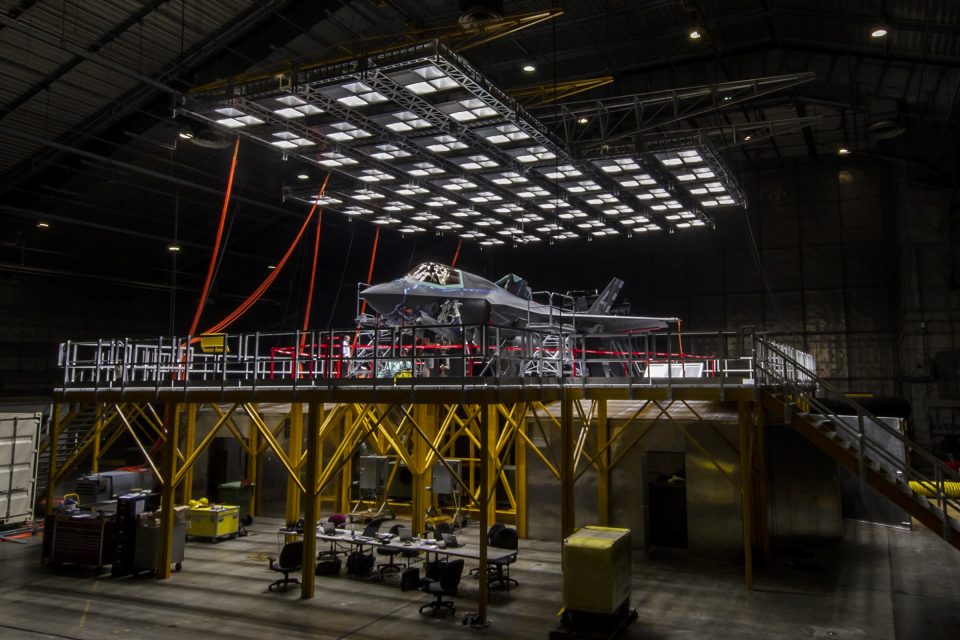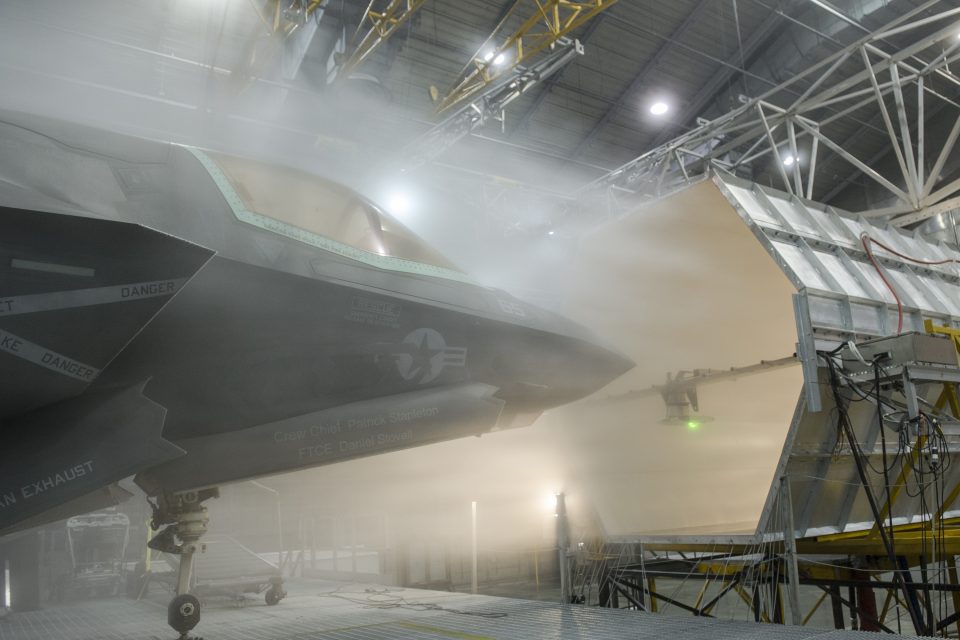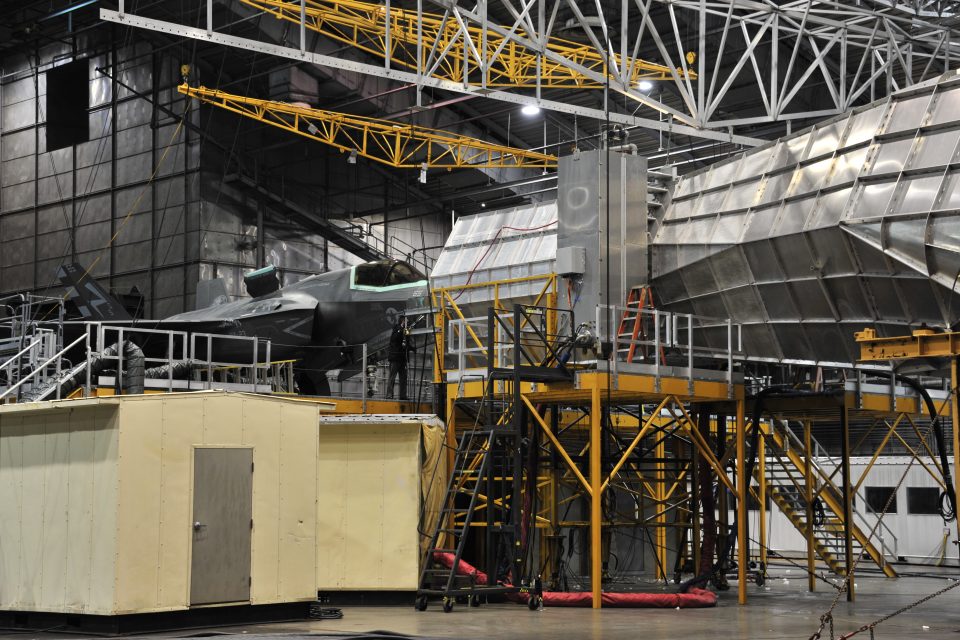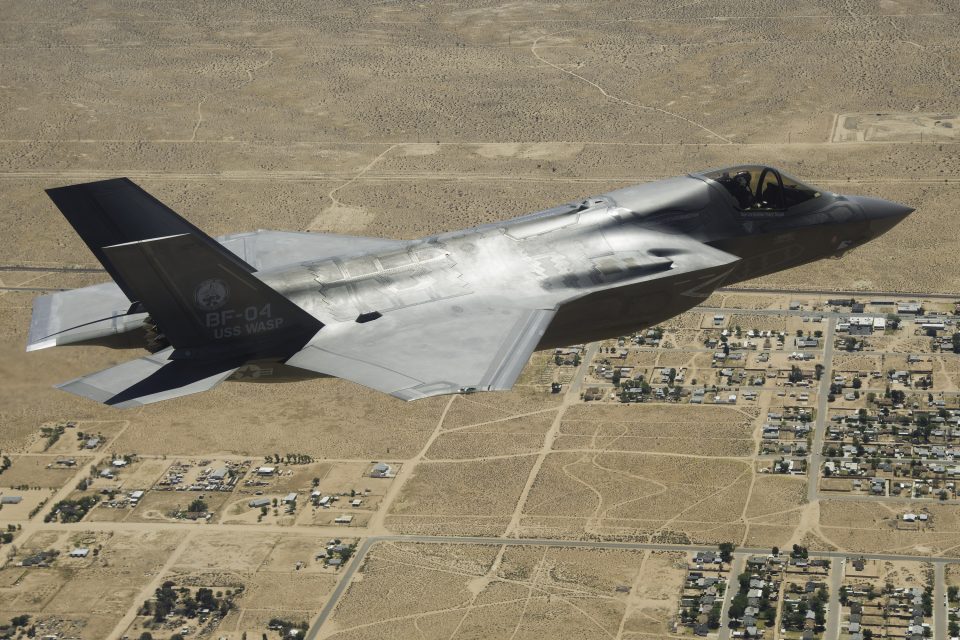2015-02-16 The F-35 will be operated by the US and its allies worldwide.
The planning from the beginning has been to build and deploy an aircraft to operate within the wide variety of climatic conditions which such a fleet from the outset would encounter.
Norway can expect to fly in the Baltic, the North Sea and the Arctic.
Australia will fly in the arid region of Western Australia, and Edwards AFB is no stranger to heat.
The F-35 is nearing completion of its climatic testing.
In the photos below in the slideshow, photos provided by Sylvia Pierson, the Public Affairs Officer for the F-35 Lightning II Pax River Integrated Task Force in Pax River. provides an overview to date on some of the testing, from the arrival of the plane to hot and cold testing.
The final photo is just there because it is a great one showing the F-35B operating in the snow at Pax River.
And this story published by Eglin AFB on February 4, 2015 provides an overview on the process:
Within the decade, the F-35 Lightning II will be deployed to all corners of the globe—from the icy mountains of Norway to the scorching desert of Australia—and we must ensure the aircraft can perform in these dynamic environments.
To do this, we look no further than a structure straight out of the post-World War II era: the McKinley Climate Testing Laboratory at Eglin Air Force Base, Florida.
The McKinley Climatic Laboratory, known simply as the “climatic chamber,” has been the home of climate testing for every aircraft developed since 1947. It has become a “rite of passage” for all aircraft on their journey to Initial Operating Capability (IOC).
As the F-35 approaches its IOC debut for the U.S. Marine Corps in 2015, it too must be put through the rigors of the climatic chamber. Only this time, the test is being performed differently than ever before.
To accommodate the swiveling engine nozzle and lift-fan system of the Lightning II, a 12-foot high “restraint and support” structure interwoven with a system of ventilation ducts was designed. This apparatus secures the F-35 and allows it to operate at high power in both conventional and Short Takeoff/Vertical Landing (STOVL) mode while inside the building.
Ventilation of the exhaust is vital to maintaining a stable temperature inside the chamber. Conditioned air is constantly pumped in to ensure the pressure in the building is always higher than the pressure inside the ducts surrounding the engine and other openings on the aircraft. This difference in pressure is a safeguard that maintains the jet exhaust is flowing out of the chamber through the ducts, allowing the facility to sustain a constant temperature.
Water spraying from the ducting at the back of the engine absorbs some sound wave vibrations emitted from the engine that is capable of generating 40,000 pounds of thrust—thereby decreasing decibel levels in the chamber.
Now, it’s time to play Mother Nature.
Heating Things Up
To kick off climatic testing, engine runs are conducted at a precise set of temperatures. Over a series of days, the temperature is steadily and incrementally increased until it reaches the test maximum of 120 degrees. While the chamber itself is set to a pre-determined temperature, additional solar lamps above the aircraft recreate the intense heat of the sun on the surface of the jet.
In reality, air temperature does not remain constant throughout the day—it increases each hour the sun is up, reaching its apex in the late afternoon. In the chamber, engineers recreate the temperature fluctuation of a 24-hour day.
Much like a car bakes in the sun on a summer day, so can the F-35 Lightning. To recreate the environment in which a jet is left outside on the flight line at, say, Marine Corps Air Station Yuma in Arizona, the jet remains powered down in the chamber until it reaches the simulated day’s maximum temperature. Once temperatures peak, the test team fires up the aircraft—much like a pilot would on a typical, sweltering afternoon at Yuma.
Keeping It Cool
In a matter of days, the chamber transitions from a devilishly hot sauna to the Arctic Circle. Outside air is super-cooled using McKinley Lab’s refrigeration system and pushed into the chamber. In increments, the chamber walks its way down to -40 degrees while the jet completes test runs along the way.
At such frigid temperatures, aircraft fluids start to thicken and mechanisms operate slower—all points upon which test engineers keep a watchful eye as the temperatures dip dangerously low.
Successfully completing cold testing is another crucial step in the F-35’s journey towards IOC, because the F-35 would experience this type of environment while operating in Canada or Norway.
Let It Snow
Next, the Lightning II faces its harshest climate yet: a barrage of snow and ice that would have Santa Claus shaking in his boots.
When the F-35 hurtles through the clouds at high speeds in freezing climates, large pieces of ice can form quickly on the aircraft’s exterior. These heavy chunks of ice may break off and damage the aircraft, errantly fly into the engine or create a Foreign Object Damage (FOD) concern. For this reason, icing is one of the most dangerous elements in climatic testing.
In front of the jet sits a large apparatus composed of three massive cylinders stacked in a pyramid, parallel to the ground. Inside these cylinders are a total of nine ducted fans that blow a huge amount of air through a single funnel in the front, like a giant hairdryer. Attached to the front of this funnel is a spray bar capable of producing “clouds” of various water droplet sizes.
These droplets are blown toward the plane and freeze upon contact. While the lab cannot generate the precise wind speeds experienced by airborne aircraft, the unique setup inside the chamber is capable of producing sustained wind speeds up to 120 miles per hour—all while spewing precipitation at the F-35.
Snow and ice testing gauges the effectiveness of the aircraft’s Ice Protection System and the ability of the jet to perform in winter weather.
When It Rains, It Pours
For its final test, it is time to take the F-35 into the center of a hurricane—so to speak. To gauge how a Lightning II would hold up sitting uncovered on the flight line at a place such as Eglin AFB, the McKinley Climatic Laboratory is equipped with a system of “rain frames” that drench the jet with steady rainfall.
During rain testing, the F-35 is soaked in rainfall ranging from 1.1 inches per hour, all the way to 3.3 inches per hour. With driving rain inevitably comes gusty wind. Following the steady soak, a spray bar is placed at various positions around the aircraft. Behind this pole is a large industrial fan that generates sustained winds of 44 miles per hour in the direction of the spray bar and the F-35—creating a tropical storm-like environment that drenches the jet at that particular angle.
Whether soaring across the equator or over the tip of the northern hemisphere, the F-35 Lightning II must be ready to encounter any environment in its pursuit to defend our skies. The McKinley Climatic Laboratory helps us ensure we will be ready—no matter what Mother Nature brings.


